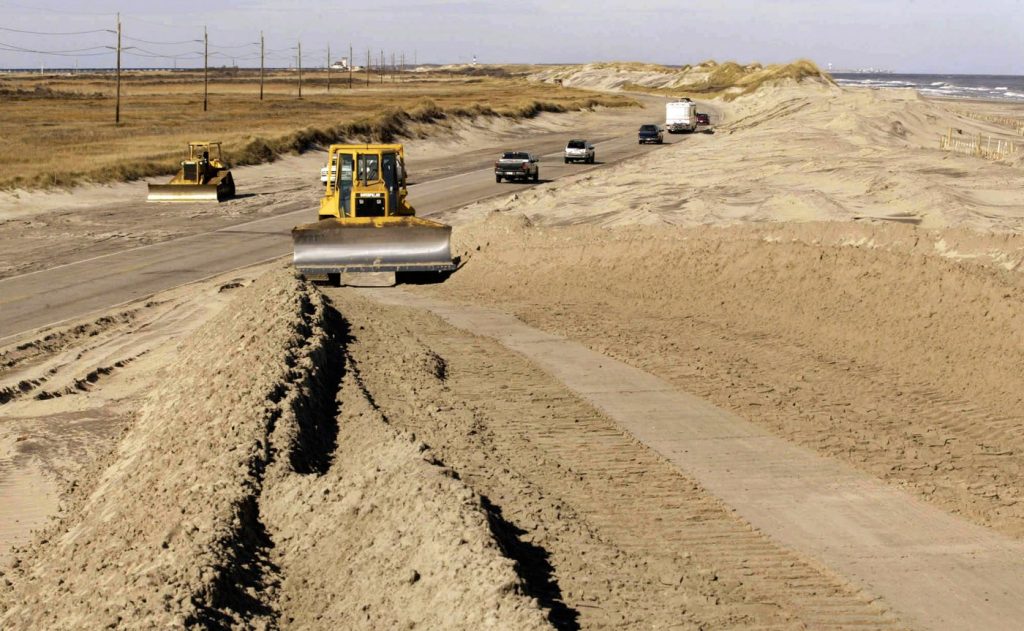The Outer Banks, a series of barrier islands off the coast of North Carolina, are facing the unpredictable forces of nature as Hurricane Erin approaches. While the storm is expected to remain hundreds of miles offshore, it is still generating dangerous waves, with heights estimated to exceed 20 feet (6 meters), which threaten to breach fragile sand dunes. In response to potential hazards to the NC 12 highway, the primary roadway connecting Hatteras Island and Ocracoke Island to the mainland, officials have issued evacuation orders, anticipating significant damage that could isolate these communities for extended periods.
Approximately 3,500 residents call the Outer Banks home, many of whom have experienced isolation due to weather-related disruptions in the past. However, the tens of thousands of vacationers frequenting the islands are not typically accustomed to such scenarios, making evacuations particularly challenging during hurricane season.
Reide Corbett, executive director of the Coastal Studies Institute, highlighted that the area has not seen waves of this magnitude in a while and pointed out a decline in the resilience of vulnerable spots over the past five years. The Outer Banks are essentially composed of ancient sand dunes that emerged above sea level during the last glacial melt approximately 20,000 years ago. The islands range from 30 miles (48 kilometers) off the North Carolina mainland, bordered by the Atlantic Ocean to the east and the Pamlico Sound to the west, making them an idyllic yet precarious environment.
The northern region of the Outer Banks, including areas like Nags Head and Kill Devil Hills, remains populated and is not currently under evacuation orders. However, Hatteras Island, connected solely by NC 12, faces an imminent risk. Ocracoke Island is even more isolated, accessible only via boat or aircraft.
In the past six decades, highway infrastructure has evolved, changing the Outer Banks from quaint fishing villages into bustling tourist destinations, now featuring luxurious vacation homes. Maintenance and repair of NC 12 are ongoing concerns, especially as storms frequently damage the roadway. North Carolina’s Department of Transportation spends over $1 million annually on routine maintenance, supplemented by $50 million over the last decade specifically for repairs due to storm damage.
The repercussions of hurricanes like Isabel in 2003 and Irene in 2011 have shown that reconnecting these communities after severe storms can take weeks or even months, as inlets can be cut into Hatteras Island, requiring ferry services to restore access. Routine Nor’easters also pose significant threats, clashing waves and debris can wash over the road, making NC 12 temporarily impassable.
In addition to storm impact, rising sea levels due to climate change pose a severe long-term threat to the Outer Banks. With much of the land lying just a few feet above sea level, the risk of coastal erosion is perpetual. The community of Rodanthe, notably vulnerable, has lost over a dozen homes since 2020, with officials fearing that if Hurricane Erin’s waves reach anticipated heights, additional homes will be destroyed.
Despite these threats, many residents remain committed to life on the Outer Banks. Shelli Miller Gates recalls her time working in the area during the late 1970s and cherishes the unique lifestyle. With a love for the ocean and its unrefined natural beauty, she finds joy in the wildness of the islands and the sense of community forged through shared experiences of isolation following weather events. The abbreviated term "OBX" has become a proud emblem for the residents, reflecting their attachment to the region.
The Outer Banks continue to attract individuals drawn to their charm and wild beauty, creating a resilient community that faces the inevitable challenges posed by nature's forces. With a thriving tourism industry generating approximately $2 billion annually for Dare County, the ongoing cycle of repair and maintenance of NC 12 remains critical for both residents and visitors alike.










